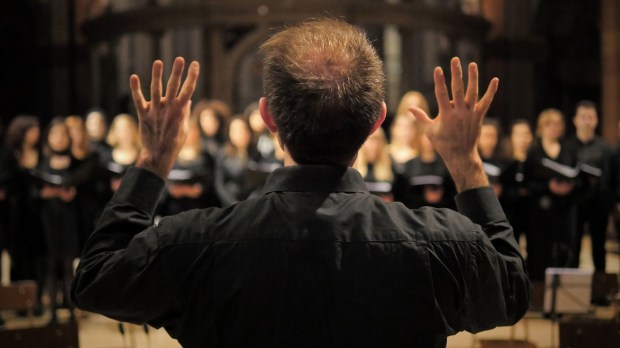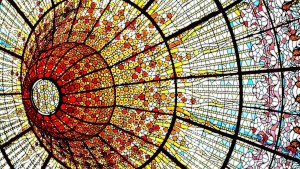If you’ve never heard it before, there is something uniquely beautiful and moving about Morten Lauridsen’s setting of O Magnum Mysterium (O Great Mystery), an ancient chant from the Breviary of the Catholic Church for Christmas.
The Latin text of the hymn reads:
O magnum mysterium,
et admirabile sacramentum,
ut animalia viderent Dominum natum,
iacentem in praesepio!
O beata virgo, cuius viscera
meruerunt portare
Dominum Iesum Christum.
Alleluia!
Which, translated into English, means:
O great mystery,
and wonderful sacrament,
that animals should see the newborn Lord,
lying in a manger!
O blessed Virgin, whose womb
was worthy to bear
the Lord Jesus Christ.
Alleluia!
The serene, soaring arrangement draws us, steadily but profoundly, into the wonder of the Incarnation—of God becoming man. The word animalia (animals) is given an almost ecstatic emphasis, and not without reason: The image of a filthy ox and donkey gazing on the eternal God, born a helpless infant, reminds us of the cosmic significance of this moment. Heaven has become one with earth, the Creator with his creation—all things drawn together, by an astounding humility, into harmony.
Lauridsen’s haunting setting sounds “ever ancient, ever new,” but in fact, was just recently composed in 1994. In a video online, he explains the surprising inspiration behind the song and its structure.
It began with a painting: Zurbarán’s “Still Life with Lemons, Oranges and a Rose” in the Norton Simon Museum. “It knocked my socks off,” Lauridsen explains, “and I’m trying to figure out, what’s going on here? Why is this thing affecting me? I want to weep when I see it.” He later learned that the three images in the painting—lemons, oranges, and a rose beside a cup of water—are all Baroque symbols of the Virgin Mary.
Around the same time, he was asked to create a piece for a Christmas concert. As Lauridsen contemplated the brief Magnum Mysterium text for six months, already set to music by so many composers including Palestrina, he struggled with how to tie it all together. He wanted the setting to be both direct and profound, both historically rooted and religiously informed. “How can I do, musically, what Zurbarán does with painting a bunch of stuff that knocks people’s socks off?”
But what Lauridsen especially wrestled with was the significance of the Virgin Mary. “I lost so much sleep on this,” he admits. “How can I, in a very direct piece, very direct setting of a piece, indicate her sorrow—her profound sorrow of seeing her son murdered?” The breakthrough moment came one night lying in bed: It had to be done with one note.
On the word “Virgin” in the middle of the piece, we hear a G-sharp note, Lauridsen explains—the only note out of the key of the setting, requiring musical resolution. It is thus “the most important note in the piece”; it “shines a sonic spotlight on the meaning of that word.”
Christmas has come to a close—officially, anyway. (Perhaps, like us, you stubbornly still have your tree and lights up.) With it, it would appear that Christmas music should be put behind us, too. But Lauridsen’s tour of his O Magnum Mysterium reminds us that the heart of Christmas is the Incarnation, and the joy of the Incarnation is bound, by an inner logic, to the sorrow of the Crucifixion.
Christ’s crib points ahead to his cross—and his cross back to his crib. In his Letter to the Philippians, St. Paul captures the downward journey of God uniting them: Christ “emptied himself . . . being born in human likeness. And being found in human form, he humbled himself, and became obedient to the point of death—even death on a cross” (Phil. 2:7–9).
Fulton Sheen put it this way: “Love by its very nature tends to an Incarnation, and every Incarnation tends to a Crucifixion.” The great mystery, which Lauridsen captures so beautifully, is Love—a revelation not only of what God is, but what we are called to become.



